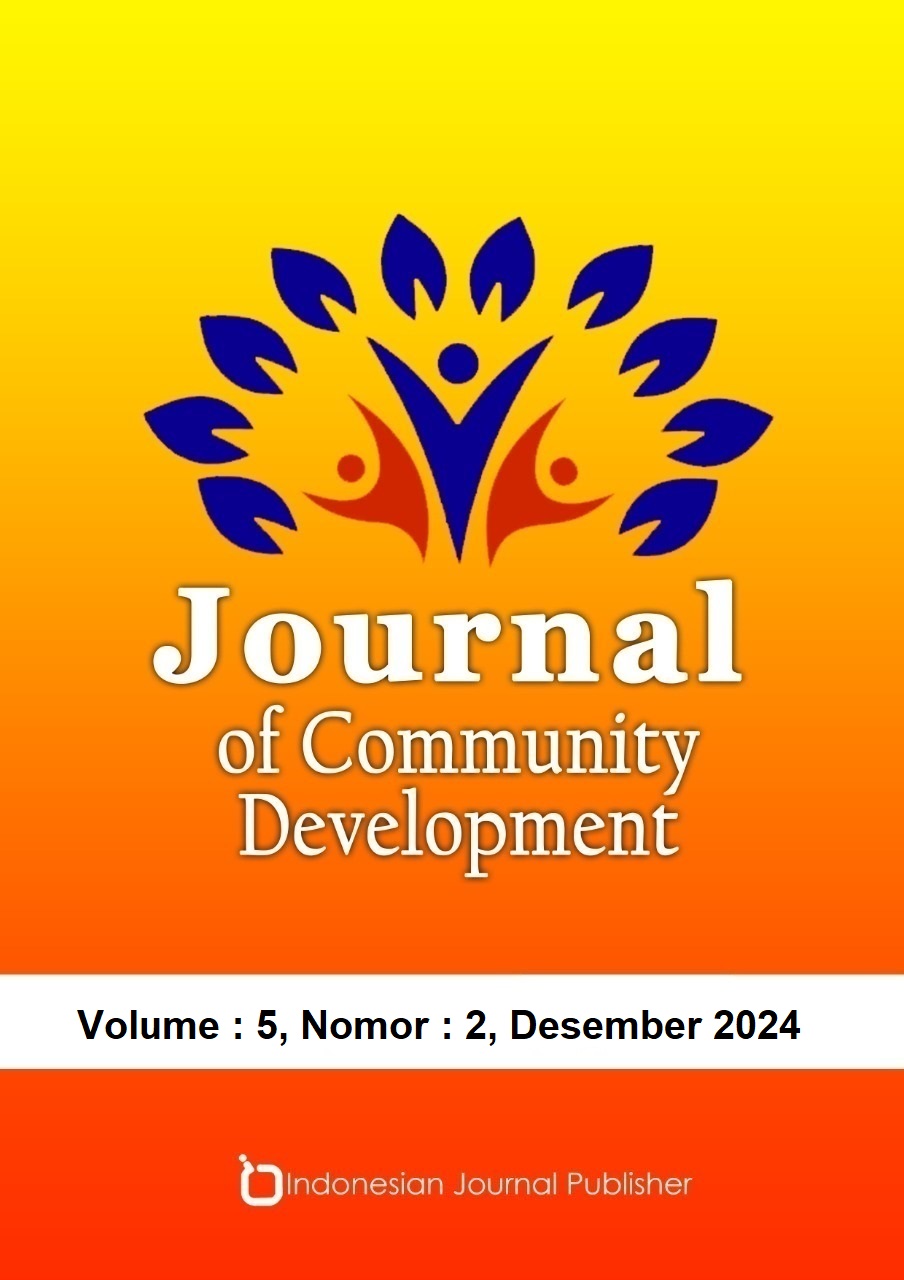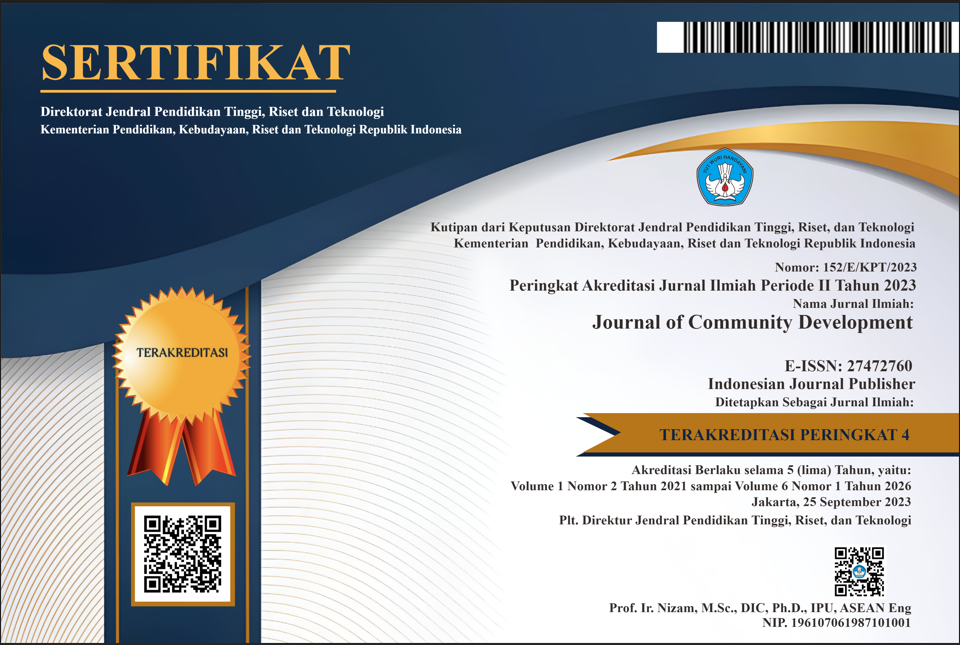Kursus Singkat Monitoring Perkembangan Balita Dalam Penanganan Stunting Sebagai Upaya Peningkatan Pengetahuan Kader Surabaya Hebat
DOI:
https://doi.org/10.47134/comdev.v5i2.275Keywords:
toddler, cadre, monitoring, stuntingAbstract
Undernutrition is responsible for nearly 50% child deaths, especially in poor countries. Approximately 25% of toddlers worldwide experience stunted which is associated with mortality, cognitive impairment and reduced productivity. The mission of the Kementrian Kesehatan is to improve the level of public health through community empowerment (Posyandu). especially in Surabaya with the empowerment of Kader Surabaya Hebat (KSH). Wonokromo District, with an area of 8.42 Km2 and occupying 2.55% of the area of Surabaya city, has 3 access to primary health facilities, covering 6 sub-districts (Kelurahan). The ratio of community health centers per Wonokromo sub-district is 1.9, this shows that the coverage of primary health access in Wonokromo is quite good. KSH knowledge needs to be improved through education, short courses and monitoring. The aim of this Pengabdian activity is to increase knowledge regarding monitoring the toddlers development, especially in handling stunting toddlers. This activity was able to increase the knowledge of KSH as shown by an increase in the highest score of 100, from 10% to 54.2%. Increasing KSH knowledge is a first step so that it can be applied to the community, namely toddlers in the Wonokromo health center area, so that monitoring of stunting toddlers can run and can prevent or even reduce the stunting rate in Wonokromo.
Downloads
References
Alindariani, E.S. et al. (2021) ‘Peningkatan Kapasitas Kader tentang Upaya Deteksi Dini Stunting pada Balita dengan Pelatihan Daring Media Karya Kesehatan : Volume 5 No 1 Mei 2022
Budge, S. et al. (2019) ‘Environmental enteric dysfunction and child stunting’, Nutrition Reviews, 77(4), pp. 240–253. Available at: https://doi.org/10.1093/nutrit/nuy068.Dinkes Surabaya (2023) ‘Profil Dinas Kesehatan Kota Surabaya’, Dinas Kesehatan, p. 163.
de Onis, M. and Branca, F. (2016) ‘Childhood stunting: A global perspective’, Maternal and Child Nutrition, 12, pp. 12–26. Available at: https://doi.org/10.1111/mcn.12231.
Endang Retno Surjaningrum et al. (2022) ‘Peta Potensi Pengentasan Stunting di Kota Surabaya’, Media Gizi Indonesia, 17(1SP), pp. 97–103. Available at: https://doi.org/10.20473/mgi.v17i1sp.97-103.
Iswarawanti, D.N. (2010) ‘Kader Posyandu: Peranan dan Tantangan Pemberdayaan dalam Usaha Peningkatan Gizi Anak di Indonesia', 13(04), pp. 169–173.
Kemenkes, 2023' Materi Hasil Survei Status Gizi Indonesia (SSGI) 2022’ https://ayosehat.kemkes.go.id/materi-hasil-survei-status-gizi-indonesia-ssgi-2022
Muhammad, H.F.L. (2018) ‘Obesity as the Sequel of Childhood Stunting: Ghrelin and GHSR Gene Polymorphism Explained’, Acta medica Indonesiana, 50(2), pp. 159–164.
Nugraheni, N. and Malik, A. (2023) ‘Peran Kader Posyandu dalam Mencegah Kasus Stunting di Kelurahan Ngijo’, Lifelong Education Journal, 3(1), pp. 83–92. Available at: https://doi.org/10.59935/lej.v3i1.198.
Owino, V. et al. (2016) ‘Environmental enteric dysfunction and growth failure/stunting in global child health’, Pediatrics, 138(6). Available at: https://doi.org/10.1542/peds.2016-0641.
Tse, A.D.P., Suprojo, A. and Adiwidjaja, I. (2017) ‘KESEHATAN MASYARAKAT’, 6(1), pp. 60–62.
Downloads
Published
How to Cite
Issue
Section
License
Copyright (c) 2024 Inawati, Titiek Sunaryati, Harman Agusaputra, Putu Oky Ari Tania

This work is licensed under a Creative Commons Attribution 4.0 International License.







